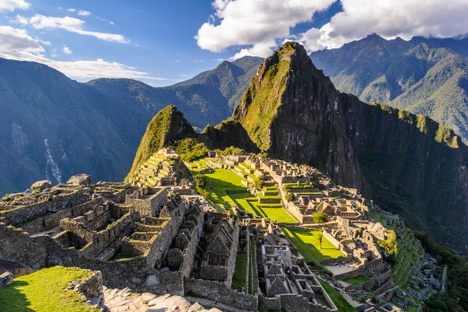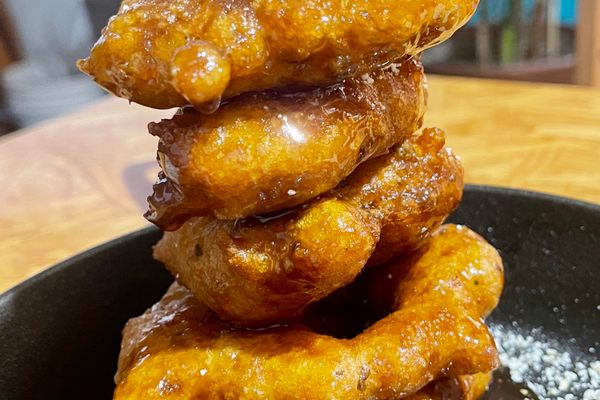If there is one thing that Peru and its cuisine are known for, it is the potato. The region (including nearby Chile and Bolivia) not only boasts the oldest archeological remains of potatoes—dating back some 13,000 years—but the vast Inca Empire owes much of its glory to potatoes’ caloric contributions. And while modernizing diets found some urban eaters drifting away from the staple food, committed home cooks and Peruvian chefs participating in the Novoandina (New Andean) cuisine movement have worked to revitalize the useful tuber. One dish towering at the center of this movement is the strikingly colorful and creative potato casserole known as causa.
At its most simple, causa is a cold, layered casserole in which mashed potatoes sandwich inner tiers of mayonnaise-suspended chicken, tuna, and shrimp. The potatoes get a flavorful lift from lime juice and aji amarillo, a Peruvian pepper, while the meat gets a kick from spicy-smoky chipotle. But for many contemporary chefs, this is just the beginning. Diners can find causas rising from their plates like royal wedding cakes. Crafting the casserole in ring molds to form perfect cylinders with precise tiers, chefs will intersperse golden, purple, and amber-hued potatoes with green avocados and flamingo-pink shrimp, garnishing the tops with cilantro or zesty microgreens.
This, of course, is not to say that home cooks don’t do the dish justice. Many Peruvians still follow classic recipes passed down over the generations. As for how far back that goes, it’s difficult to say. Some scholars think the name causa comes from the Quechua word kausaq, which means “that which gives life.” Meanwhile, key ingredients in modern-day causa, such as lime, came with European settlers. Regardless of causa’s exact origins, we owe a rich community of committed cooks and contemporary chefs for taking this tuber from simple starch to sexy spud.
Where to Try It
-
SkyKitchen Peruvian Cooking Classes
470 Enrique Palacios, Miraflores, 15074, PeruVisitors can learn how to make causa and other Peruvian dishes with these local cooking classes.
-
Restaurante Francesco
Caminos del Inca 758, Chacarilla, PeruOpen 12:00 p.m. to 5:00 p.m., this spot specializes in Peruvian and Italian dishes.
Written By
 Leigh ChavezBush
Leigh ChavezBush
Sources
- doi.org/10.1353/dlg.2015.0016
- www.jstor.org/stable/4254928?seq=1#page_scan_tab_contents
- andina.pe/Ingles/noticia-causa-one-of-the-best-cold-layered-potato-dishes-174781.aspx
- www.scientificamerican.com/article/the-first-americans/
- www.recetasgratis.net/receta-de-causa-limena-31268.html
- www.seriouseats.com/2018/07/meet-peruvian-causa-the-ultimate-potluck-casserole.html
















